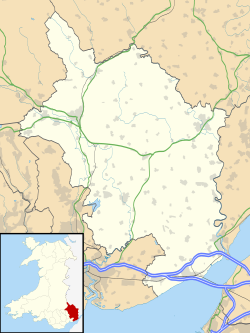Earlswood
| |
|---|---|
 Methodist chapel | |
Location within Monmouthshire | |
| Principal area | |
| Preserved county | |
| Country | Wales |
| Sovereign state | United Kingdom |
| Post town | USK |
| Postcode district | NP |
| Police | Gwent |
| Fire | South Wales |
| Ambulance | Welsh |
| UK Parliament | |
Earlswood (Welsh: Coed-yr-iarll) is a rural area of scattered settlement in Monmouthshire, south east Wales, United Kingdom. It is located five miles northwest of Chepstow, within the parish of Shirenewton and immediately east of the forested area of Wentwood.

